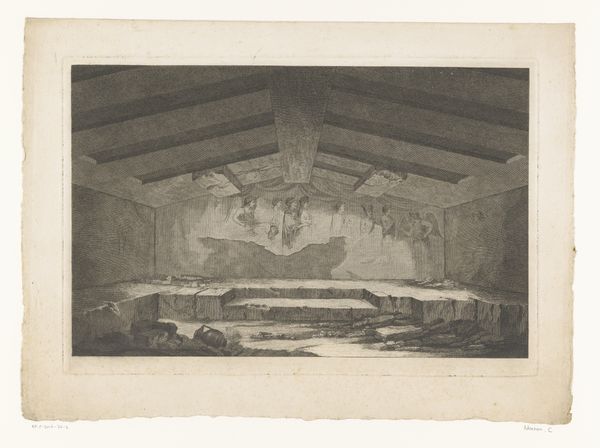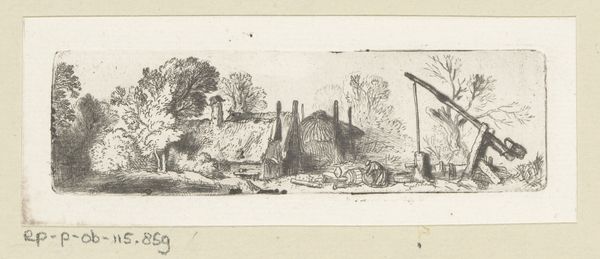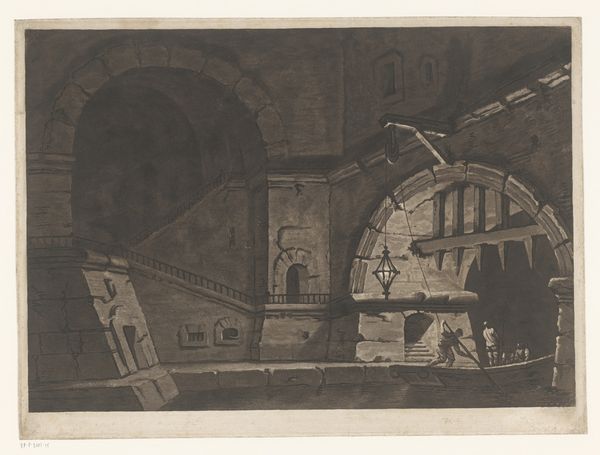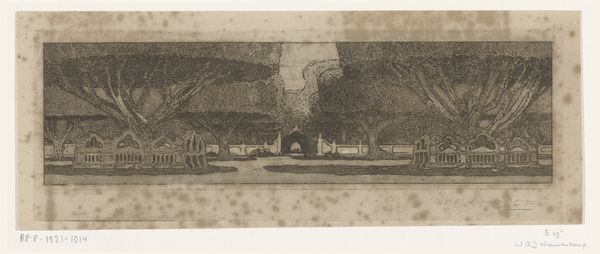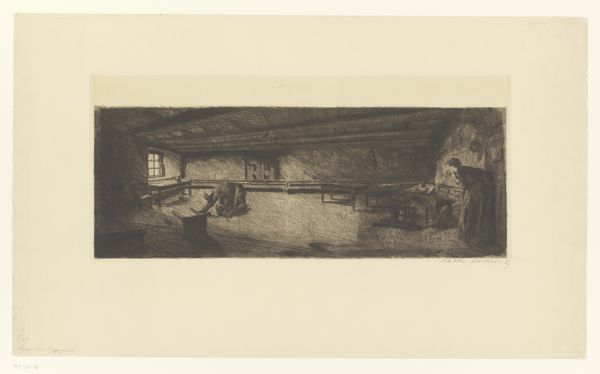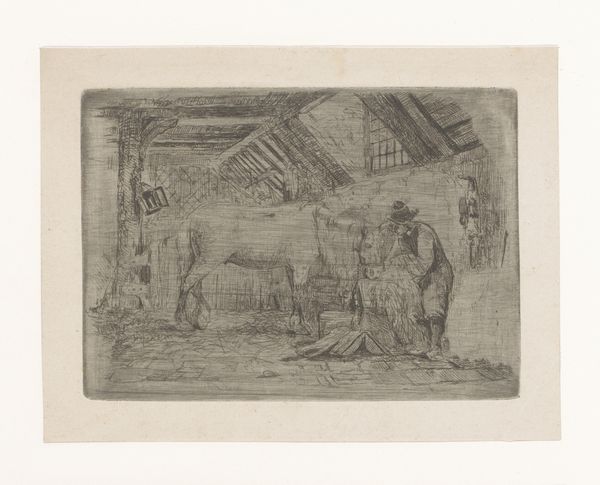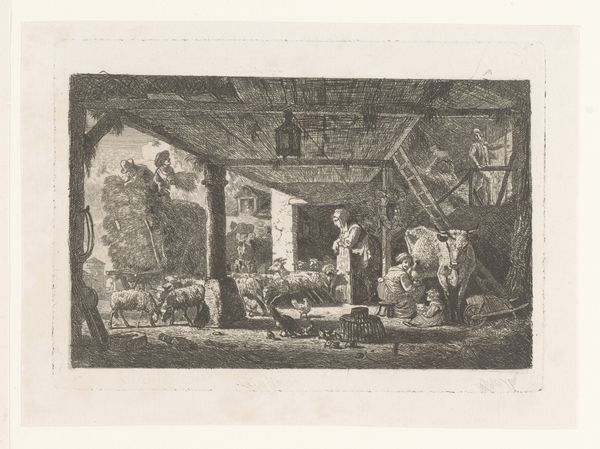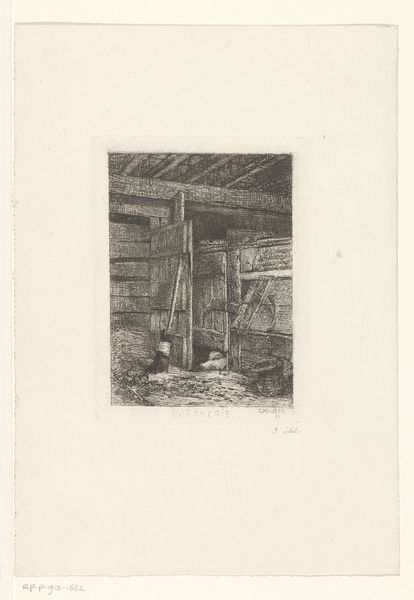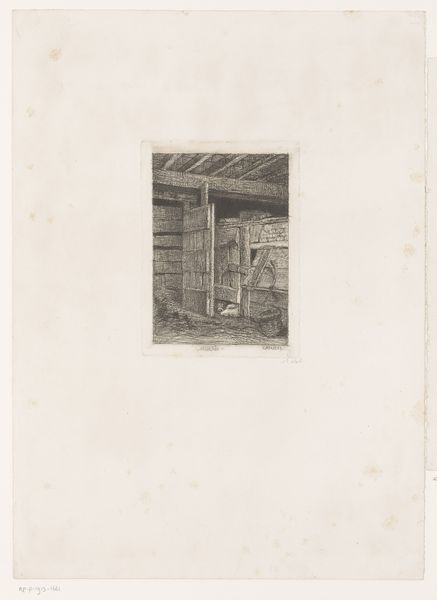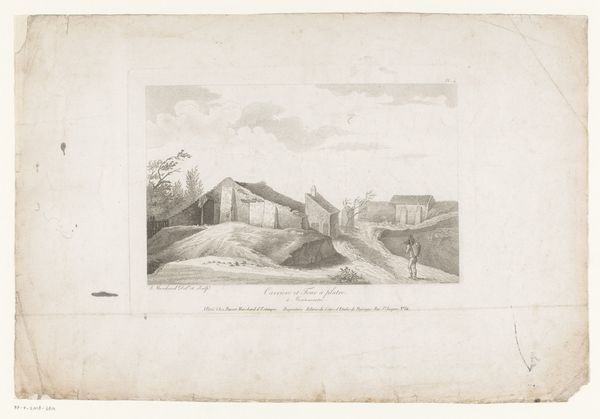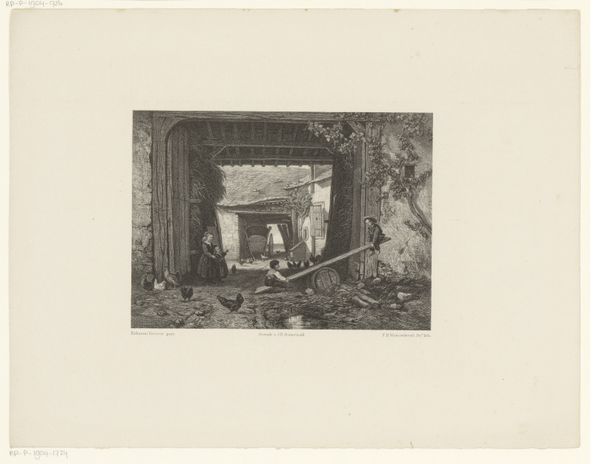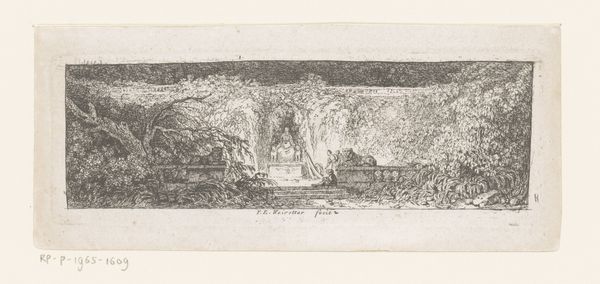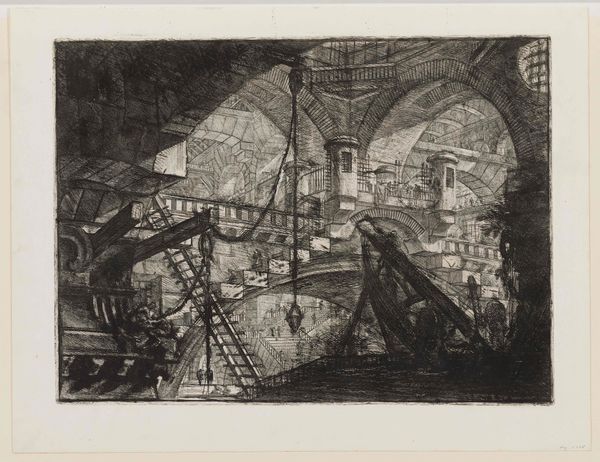
Etruskische grafkamer in Tarquinia met links een tekenaar die wordt bijgelicht met een toorts c. 1762 - 1770
0:00
0:00
christophernorton
Rijksmuseum
#
photo of handprinted image
#
aged paper
#
toned paper
#
muted colour palette
#
photo restoration
#
ink paper printed
#
parchment
#
white palette
#
nude colour palette
#
watercolor
Dimensions: height 222 mm, width 470 mm
Copyright: Rijks Museum: Open Domain
Editor: So, here we have "Etruskische grafkamer in Tarquinia met links een tekenaar die wordt bijgelicht met een toorts," from around 1762 to 1770, housed here at the Rijksmuseum. It's a watercolor piece. It looks incredibly detailed. What really jumps out at me is how the artist captured this interior scene and the whole *process* of discovery. What's your perspective on it? Curator: This print speaks volumes about the social and material conditions of art production and archaeological exploration in the 18th century. Consider the labor involved: from the miner extracting the raw materials for pigments to the artist grinding and mixing them, and finally, to the act of meticulously rendering this subterranean space. Even the paper itself tells a story. Editor: I hadn't thought about it like that. So, it’s less about the romanticism of the ancient tomb and more about the… making of the image of it? Curator: Exactly! The scene depicts not just the tomb, but also the process of its unveiling, its appropriation. The artist *becomes* a kind of artisan in the field, recording a space that in turn can enter collections like this. Editor: That makes sense. And the figures, then, are essential, not just as compositional elements, but showing the *doing* of the art-making? Curator: Precisely! We can't ignore their contribution of the process: illuminating the tomb, recording its details. What this scene really highlights is that art is work and labour, both intellectual and manual, with complex means of production. Editor: That gives me a completely new appreciation for this image. It’s like the art is *in* the action of depicting. I will start paying closer attention to process, not only to the final form, but the labour involved. Thank you. Curator: Indeed. Every artwork carries traces of these socio-economic elements; exploring that can lead to new questions and readings.
Comments
No comments
Be the first to comment and join the conversation on the ultimate creative platform.
